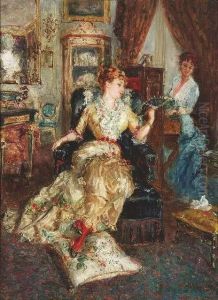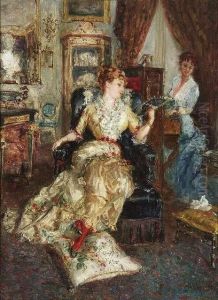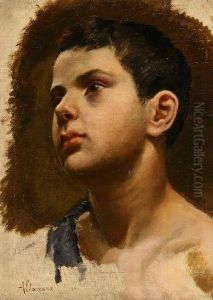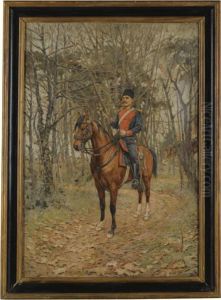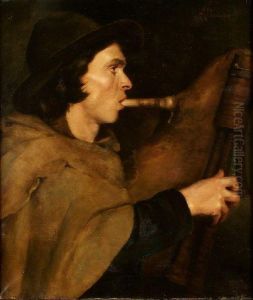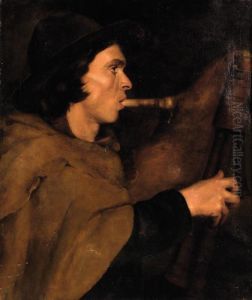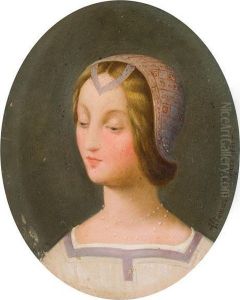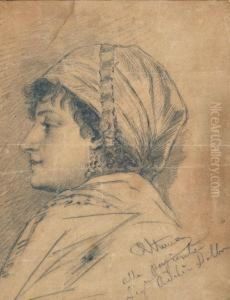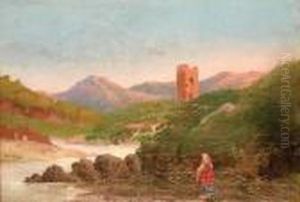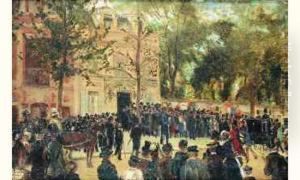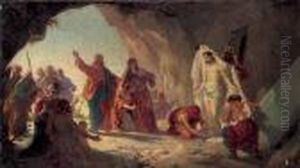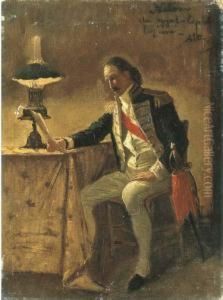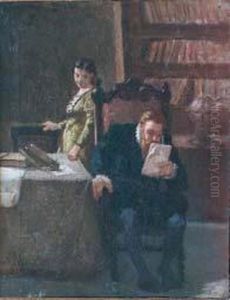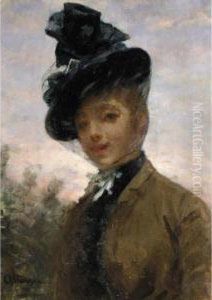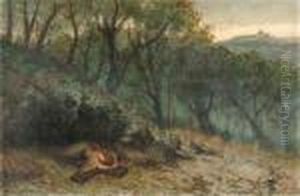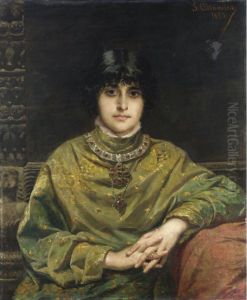Saverio Francesco Altamura Paintings
Saverio Francesco Altamura was an Italian painter, primarily known for his historical and biblical scenes, as well as for his participation in the artistic movement of the Macchiaioli. Born in Naples in 1822, Altamura showed an early interest in art, which led him to study at the Academy of Fine Arts in Naples. His talent was evident from his youth, and he quickly garnered attention for his skillful representations of historical and biblical themes.
Altamura's early career was marked by his participation in the revolutionary movements of 1848, which influenced much of his work. His political engagement is reflected in the themes he chose to depict, often focusing on moments of struggle and liberation. During this period, he also became associated with the Macchiaioli group, a precursor to the Impressionist movement, which sought to capture the natural effects of light and color through a technique of quick, loose brushstrokes. This association influenced Altamura's stylistic development, leading him to experiment with light and color in his own work.
In the 1850s, Altamura moved to Florence, where he became a central figure in the city's artistic community. There, he was involved in the establishment of the Caffè Michelangiolo, a meeting place for artists, writers, and intellectuals. This cafe became a hub for the Macchiaioli and played a significant role in the development of modern Italian art. Despite his association with the Macchiaioli, Altamura maintained a distinct style, characterized by a dramatic use of light and shadow and a focus on historical and mythological subjects.
Throughout his career, Altamura received numerous commissions for public and private works, including frescoes, altarpieces, and portraits. His works were exhibited widely in Italy and abroad, earning him recognition and accolades. However, despite his success, Altamura struggled with financial difficulties throughout much of his life, a reflection of the often precarious nature of the artist's existence during this period.
Saverio Francesco Altamura's legacy is that of an artist who bridged the traditional and the modern, combining classical themes with innovative techniques. His contributions to the Macchiaioli movement and to Italian art history are significant, marking him as a key figure in the transition towards modern artistic expressions. Altamura died in Florence in 1897, leaving behind a body of work that continues to be appreciated for its historical depth and artistic innovation.
